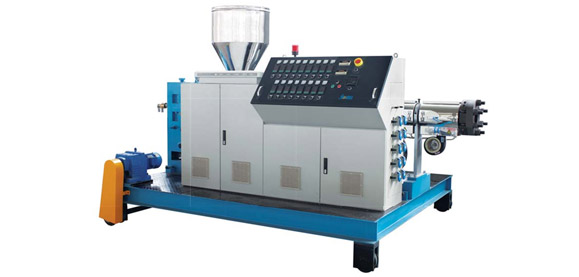TECHNOLOGY AND INNOVATION Improvements in technology have been the story of most every product category in the industry, and the pace of innovation has quickened in recent years with the increase in competition among the categories. Ceramic tile has seen dramatic changes. At the end of the 1990s, strong glazes were developed that allowed the porcelain market to expand. Next came isotactic pressing, which allowed production of a more precise tile. “Now we could make larger than 12” tile,” reports Svend Hovmand, former president of Crossville Inc. Other technologies followed-like roller printing that enabled glazing to be both simpler and more sophisticated. The industry began to produce tile that looked like real stone. In 2010, according to Hovmand, digital printing techniques added the ability to use up to 12 different colors to produce a tile. “You can vary 200 to 500 different tiles,” he notes. “Once you have 150, it looks pretty natural.” Digital printing also helped improve wood-look tiles. Recent advances by ceramic tile machinery producers like Sacmi and Laminam (part of the Systems Group) have changed again the way tile can be made, enabling ever-larger formats and varying thicknesses that can be used as cladding and countertops. The hardwood category has experienced notable advancements as well. David Wootton, former president of Columbia Hardwood, points out that when he started in the business, unfinished hardwood was the only option. Then the industry applied wax. Later, unfinished strips led to prefinished engineered floors with an explosion of looks. One of the big innovations in the industry came from European company Pergo, which introduced laminate to the U.S. market, says Wootton. “It’s a piece of paper with a piece of plastic on top,” he points out. “I remember saying, ‘That will never fly.’ Everyone should thank Pergo, and our good friend Jim Gould, former president of St. Louis-based distributor, Misco Shawnee, who dug it up.” Later, laminate evolved into click flooring systems, another major technological advancement that changed not only laminate but the wood and vinyl categories as well. LVT, which has been around for decades but really gained traction just a few years ago, and WPC have taken the market by storm. The products’ inherent durability and resistance to water damage appeal to consumer’s concerns, and innovation with regard to visuals means that their appearance more closely resembles the real product than ever before. But innovation hasn’t been limited to hard surface. An important change to the area rug business, which saw increasing use with the proliferation of hard surface flooring, was afoot as well. O’Neill recalls a sea-change coming from Oriental Weavers, an Egyptian company that made area rug designs out of cost-effective polypropylene. “The middle-class homeowner could now afford area rugs,” says O’Neill. In carpet, innovation from fiber drove technological advances for years. As Steve Griffith, who retired from Invista as chief marketing officer about a year ago, recalls, “The introduction of the Stainmaster brand, and the fact that it is still the most recognized brand in the industry, is probably the single biggest thing from my perspective.” Stainmaster endured, Griffith reports, because it focused on the consumer and allowed carpet manufacturers to make innovative products. Another factor was the launch of the DuPont Flooring System in 1996, which, according to Griffith, “fundamentally changed the way consumers thought about carpet.” Griffith believes that Tactesse was the first major fiber innovation from DuPont. Soft 6,6 nylon with a differential feel caught the consumer’s fancy. “That fiber as a launch was one of the-if not the-largest for growth in sales in the history of Stainmaster. It was around for ten years before the carpet mills launched their own versions of soft nylon.”SUSTAINABILTY That the flooring industry is a leader in the sustainability movement might surprise some. But it is one of the key developments in the business over the past quarter century. Some of it was driven by necessity. Repeated and prolonged droughts in northwest Georgia in the late 1980s and early 1990s forced the mills to rethink the way they manufactured product to use less water. Maturing as businesses also forced the mills to look at ways to manufacture more efficiently, including the raw materials and resources that they used. They looked for ways to reduce energy costs and water use and make carpet more affordably. At the same time, Paul Hawken was writing The Ecology of Commerce, a book about sustainability and the responsibility of business for the environment and future generations. The design community was one of the first to jump on that bandwagon and start demanding that its suppliers consider the impact of their products. Many give most of the credit to Ray Anderson, former Interface chairman. Wells is certainly in that group. “When we came to Interface, the company was not doing that well. Incoming president Charlie Eitel told Ray he needed to get out of the way,” Wells says. “That was important. Ray took a year off to find his mission. It changed him. At first I thought it was a gimmick to sell more carpet. But he really believed it. And it did sell more carpet.” Wells says Anderson raised provocative ideas to customers, industry experts and analysts-anyone who would listen. “That was a remarkable moment,” Wells notes. “The environmental community wrapped their arms around him because they finally had the CEO of a company agreeing with them.” Through Anderson’s work, Interface made a big impact on the movement. He made the first keynote speech at Greenbuild to a crowd of maybe 70 people. When he received an award the year he died, in 2011, there were 30,000 in the audience, according to Wells. Of course, many other flooring companies committed to the sustainability march. And the total carpet industry came together at the end of the 1990s through the Carpet and Rug Institute to create an industry-wide initiative with a Memorandum of Understanding. That led to the creation of the Carpet America Recovery Effort in 2001. Since then, over 4.6 billion pounds of carpet have been diverted from landfill.
268. При кладке стен здания на высоту до 0,7 м от рабочего настила и расстоянии от уровня кладки с внешней стороны стены до поверхности земли (перекрытия) более 1,8 м необходимо применять ограждающие устройства, а при невозможности их применения – системы безопасности.
The Keel fin looks and feels different than anything else Futures Fins manufactures, but performs at the same level, or better than many of the other fins for stand-up paddleboards (SUP).
Например как вы – за звонкие монеты от власти (а может просто за еду или зачеты) ссылаться на опыт развитых стран и разные небылицы

Да, не смешно. Найдите 15,5 млрд рублей. Ровно столько надо на реализацию схемы. Чтобы появился трамвай в Салават Купере, чтобы закольцевать "пятерку", проложить метробусные линии. Ну еще был вариант изменить маршрутную схему. Сократить число автобусов в два раза, "привязать" их остановки к станциям метро. Думаю, народ быстро взвыл бы от пересадок ) и привыкли бы люди еще нескоро.
Проемы для перемещения грузов должны иметь всесторонние ограждения.
257. Площадка верхнего яруса лесов должна быть ниже не менее 0,65 м от верха дымовой трубы.
В соответствии с подпунктом 5.2.28 Положения о Министерстве труда и социальной защиты Российской Федерации, утвержденного постановлением Правительства Российской Федерации от 19 июня 2012 г. N 610 (Собрание законодательства Российской Федерации, 2012, N 26, ст. 3528; 2013, N 22, ст. 2809; N 36, ст. 4578; N 37, ст. 4703; N 45, ст. 5822; N 46, ст. 5952), приказываю:

В Восточной Африке наблюдается значительная нехватка нефтепродуктов, а потому спрос на продукцию НПЗ в Порт-Судане ожидается высокий.
66. Леса оборудуются лестницами или трапами для подъема и спуска людей, расположенными на расстоянии не более 40 м друг от друга. На лесах длиной менее 40 м устанавливается не менее двух лестниц или трапов. Верхний конец лестницы или трапа закрепляется за поперечины лесов.
Market Segment by Applications can be divided into: Plastic Products, Food & Feed Extrusion, Pharmaceuticals, Others
а что, Метшин заложил уже фундамент будущего дома для сына в предполагаемом районе строительства МСЗ??
Геоинформационные системы для решения диспетчерских и управленческих задач предприятий газовой отрасли // Компании // Аналитика | Wpc Extrusion Machine Related Video:
We normally follow the basic principle "Quality Initial, Prestige Supreme". We've been fully committed to offering our consumers with competitively priced good quality merchandise, prompt delivery and professional support for Used Extruder Machine For Sale , Small Screw Jacks , Single Screw Extruder Suppliers , Immediate and expert after-sale service supplied by our consultant group has happy our buyers. Comprehensive Info and parameters from the merchandise will probably be sent to you for any comprehensive acknowledge. Free samples may be delivered and company check out to our corporation. n Morocco for negotiation is constantly welcome. Hope to get inquiries type you and construct a long-term co-operation partnership.
